

10 new things we’ve learned about death. For centuries cultures have personified death to give this terrifying mystery a familiar face.Modern science has demystified death by divulging its biological processes, yet many questions remain.Studying death is not meant to be a morbid reminder of a cruel fate, but a way to improve the lives of the living.

Black cloak. Scythe. Skeletal grin. The Grim Reaper is the classic visage of death in Western society, but it's far from the only one. L’effet placebo mis à nu. Mais avant de commencer… Sur l’air du refrain de L’effet papillon de Bénabar : ♩ C’est l’effet pla-ce-bo ♬ Bien peu de causes, grandes conséquençeues ♪ Plutôt plaisant ce petit mot… ♫ Juste du glucose, mais tu dépenses !
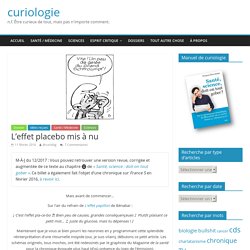
♪ Maintenant que je vous ai bien pourri les neurones en y programmant cette splendide réinterprétation d’une ritournelle insipide (oui, je suis vilain), débutons ce petit article. Les schémas originels, tous moches, ont été redessinés par le graphiste du Magazine de la santé pour la chronique évoquée plus haut (d’où présence du logo de l’émission). Imaginez : vous avez un vilain mal de crâne, un médecin vous donne une gélule, et bientôt vous allez mieux. Scientists Just Discovered Organisms That Are Distinct From Any Life Forms Known to Science. New Life On the tree of life, humans share a branch with a diverse array of creatures, all with one thing in common: a backbone.
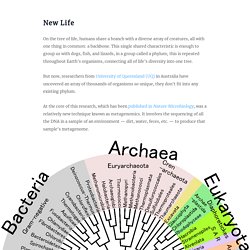
This single shared characteristic is enough to group us with dogs, fish, and lizards, in a group called a phylum; this is repeated throughout Earth’s organisms, connecting all of life’s diversity into one tree. But now, researchers from University of Queensland (UQ) in Australia have uncovered an array of thousands of organisms so unique, they don’t fit into any existing phylum. At the core of this research, which has been published in Nature Microbiology, was a relatively new technique known as metagenomics.
It involves the sequencing of all the DNA in a sample of an environment — dirt, water, feces, etc. — to produce that sample’s metagenome. From an international database of more than 1,500 metagenomes, the UQ team reconstructed the individual genomes of 7,280 new bacteria and 623 new archaea. Tiny Helpers. Scientists have observed epigenetic memories being passed down for 14 generations. Scientists Used CRISPR to Put a GIF Inside a Living Organism’s DNA. The promise of using DNA as storage means you could conceivably save every photo you’ve ever taken, your entire iTunes library, and all 839 episodes of Doctor Who in a tiny molecule invisible to the naked eye—with plenty of room to spare.
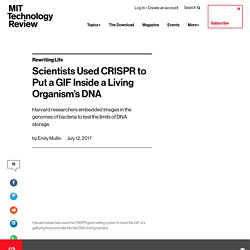
But what if you could keep all that digital information on you at all times, even embedded in your skin? Harvard University geneticist George Church and his team think it might be possible one day. They’ve used the gene-editing system CRISPR to insert a short animated image, or GIF, into the genomes of living Escherichia coli bacteria. The researchers converted the individual pixels of each image into nucleotides, the building blocks of DNA.
They delivered the GIF into the living bacteria in the form of five frames: images of a galloping horse and rider, taken by English photographer Eadweard Muybridge, who produced the first stop-motion photographs in the 1870s. In the future we won’t edit genomes—we’ll just print out new ones. At least since thirsty Sumerians began brewing beer thousands of years ago, Homo sapiens has had a tight relationship with Saccharomyces cerevisiae, the unicellular fungus better known as brewer’s yeast.
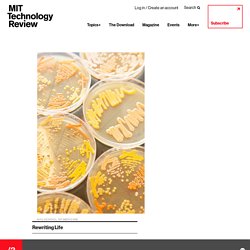
Through fermentation, humans were able to harness a microscopic species for our own ends. These days yeast cells produce ethanol and insulin and are the workhorse of science labs. That doesn’t mean S. cerevisiae can’t be further improved—at least not if Jef Boeke has his way. The director of the Institute for Systems Genetics at New York University’s Langone Health, Boeke is leading an international team of hundreds dedicated to synthesizing the 12.5 million genetic letters that make up a yeast’s cells genome. In practice, that means gradually replacing each yeast chromosome—there are 16 of them—with DNA fabricated on stove-size chemical synthesizers.
“Over the next 10 years synthetic biology is going to be producing all kinds of compounds and materials with microorganisms,” says Boeke. Death-bringing 'brain tsunamis' have been observed in humans for the first time. A biotech CEO explains why he injected himself with a DIY herpes treatment on Facebook Live.
Aaron Traywick took to the stage at a biohacking conference in Austin, Texas, dropped his pants, and injected himself in the thigh with an experimental herpes treatment created by his company, Ascendance Biomedical.

The whole thing was broadcast on Facebook Live on February 4. It was more performance art than science, and even the audience—a room full of people interested in self-experimentation—seemed skeptical. Traywick’s stunt is the latest example of self-injection by biohackers who, despite having limited or no medical experience, are concocting purported treatments from DNA strands they order on the internet. Experts call the treatments unlikely to work and potentially dangerous, and the US Food and Drug Administration warned last November against “do-it-yourself” gene treatments (see “Biohackers Disregard FDA Warning on Gene Therapy”).
Plus, he has herpes, and he’d like to be cured. Even other biohackers are worried. Ascendance says its activities are legal. We Have a New Understanding of the Rarest Symbiotic Relationship in Nature. Nature’s Rarities Finding relationships between living things isn’t rare.
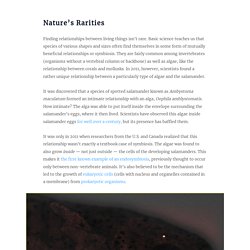
Basic science teaches us that species of various shapes and sizes often find themselves in some form of mutually beneficial relationships or symbiosis. They are fairly common among invertebrates (organisms without a vertebral column or backbone) as well as algae, like the relationship between corals and mollusks. In 2011, however, scientists found a rather unique relationship between a particularly type of algae and the salamander. It was discovered that a species of spotted salamander known as Ambystoma maculatum formed an intimate relationship with an alga, Oophila amblystomatis.
It was only in 2011 when researchers from the U.S. and Canada realized that this relationship wasn’t exactly a textbook case of symbiosis. The Feeling Isn’t Mutual A recent study published in the journal eLife was finally able to analyze just what this endosymbiosis between the salamander and the algae consists of.